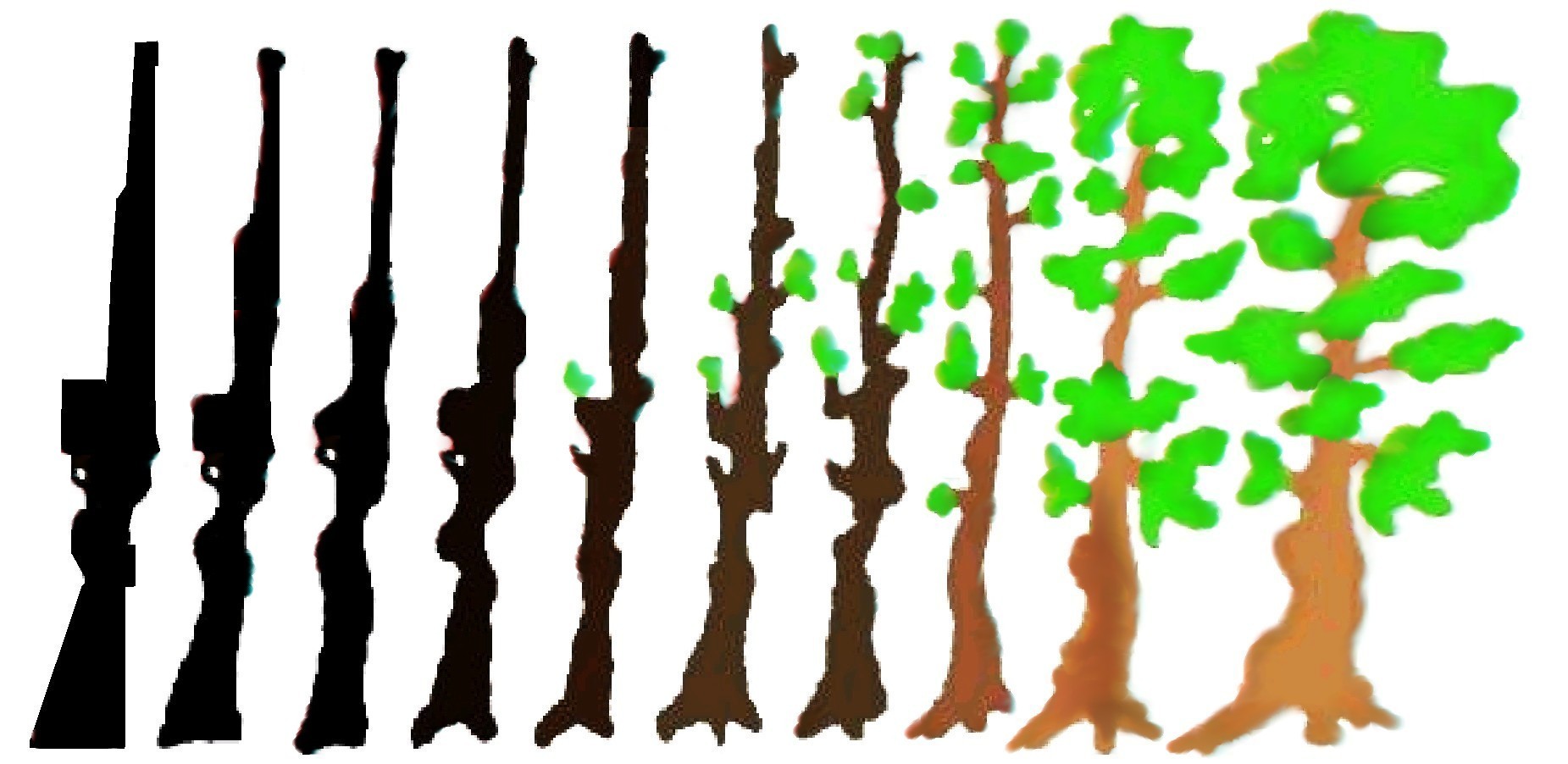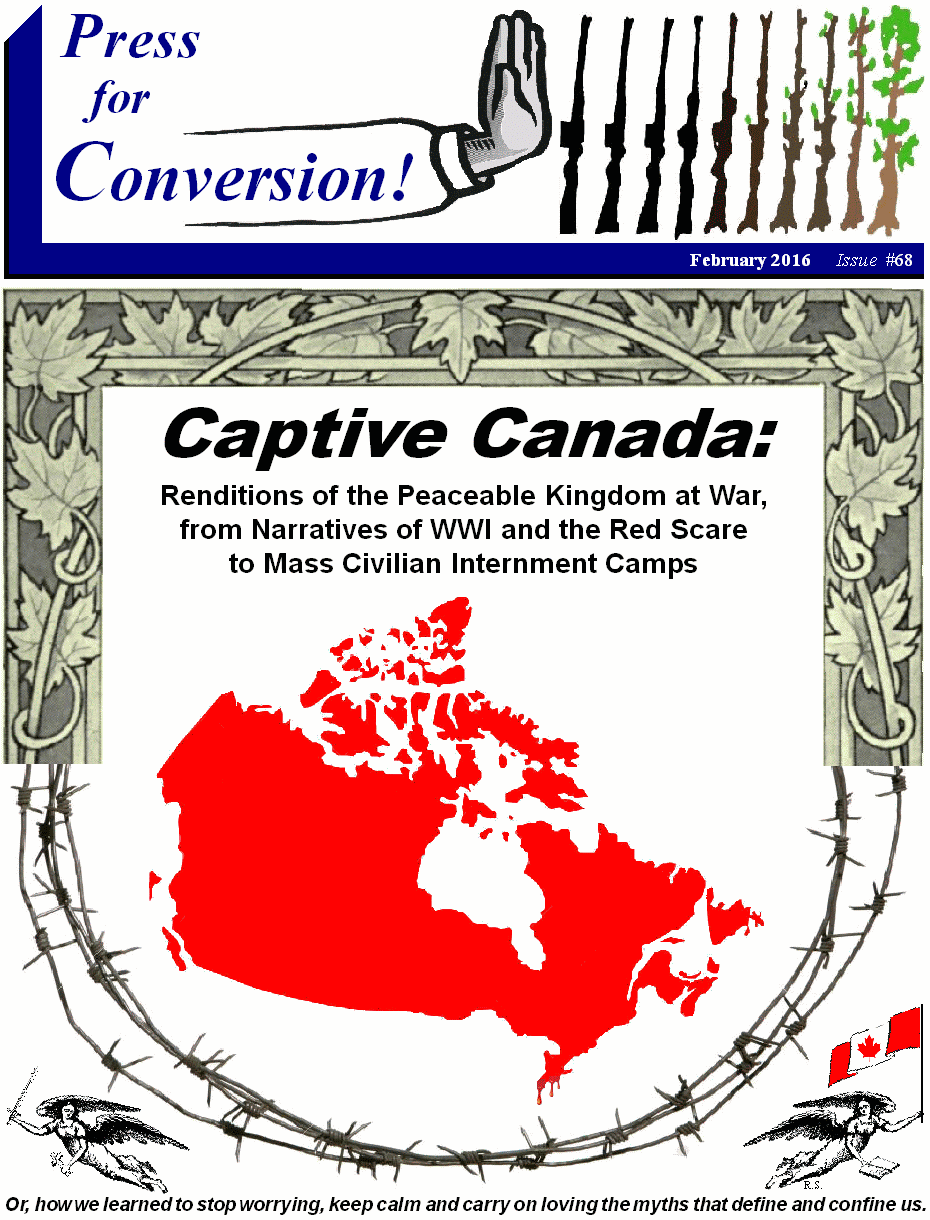
Fictive Canada:
Issue #69,
Press for Conversion! (Fall 2017)
Click here
for info about symbolism of the front-cover collage |
|
|
Table of Contents 1-
True Crime Stories and
2-
John Cabot & Britain’s Fictitious Claim on
Canada: > Why “The Dominion of Canada”?
3-
Canada’s Extraordinary Redactions:
4-
Textbook Cases of
Canadian Racism:
5-
From Popes and Pirates to Politicians and
Pioneers: >
The Canadian Legal Fiction of
6-
Breaking the Bonds of Ignorance and Denial:
>
Oh say can you see?
7-
Captivity and Slave Labour
8-
Child Slavery in Canada’s
>
Jean L’Heureux:
|
Captivity and Slave Labour
View this article from
Fictive Canada (p.43) in PDF format For 500 years, in what is now called Canada, Indigenous people have been forced into various forms of captivity and enslavement. From kidnappings by early European "explorers" and the slavery imposed by the colonial fur trade, to forced confinement on reservations and in residential schools, Aboriginal people have long endured imprisonment and forced labour. This tradition continues today in the unjust over-representation of native people in Canada’s prisons. And, with inmates toiling for $2 a day, slavery seems alive and well in Canada. The latest report of Canada’s Correctional Investigator, Howard Sapers, reveals that while Indigenous people comprise only 4.3% of Canada’s population, they represent 25% of all federal inmates. In the prairies, where 47% of inmates are Aboriginal, there are four large institutions that Sapers says "can be considered ‘Indigenous prisons’" because they make up 55% to 61% of the inmates.1 Indigenous women now represent 35% of all female prisoners in Canada. This has almost doubled since 2005. Sapers notes a 2014 study showing that more than half of native women inmates had either attended or had a family member in a residential school. Indigenous prisoners are also "more likely to be classified as maximum security, spend more time in segregation and serve more of their sentence behind bars" than non-Aboriginal inmates. What’s more, Indigenous offenders are "far more likely to be ... returned to prison for a technical violation of their release conditions."2 Sapers’ previous reports also found that Aboriginal inmates were more likely to be subjected to force by guards, and that they "accounted for 45% of all self-injury incidents in federal prisons."3In terms of prison labour, the "maximum inmate payment" for eight hours work is $6.90. Despite inflation and increased costs paid by inmates, this amount has not changed in 35 years. Because 80% of a prisoner’s wages are deducted for food, accommodation and telephone administration fees, etc., the maximum "net daily pay" is only $1.95. However, fewer than 9% receive even this paltry sum. A typical offender, says Sapers, works six hours a day for 30 cents an hour.4 In short, Canadian prisons use slave labour. Corrections Canada exploits prison labour to make various products. Some are purchased by government departments including the military, which can be seen as another form of captivity and forced labour. Prisoners not only make barracks’ furniture (bunks, bedding, chairs and desks) and weapons storage racks, they have also received contracts to refurbish hundreds of military transport vehicles.5 |
|
Ironically, Canadian prisons are sold as caring places that build Indigenous communities, culture and spirituality. This myth is fed with isolated projects such as paying slave wages to a few native prisoners to build a home for a reserve family.6 While such symbolic gestures have no real impact on Indigenous housing, they are useful in diverting attention from Canada’s colonial crimes, like land plunder. Similarly distracting is a small program using native inmates to reproduce headbands, moccasins, medicine bags, drums and dream-catcher key chains. Saying this mass production shows a "lack of respect" for local nations and artisans, Cold Lake Metis artist Dawn Marchand said this "exploitative" program lumps all First Nations together as if they were the same. It is also "completely unacceptable," said Marchand for Indigenous inmates to be "providing ‘Slave Labour’ for profit in the prison industrial complex."7 Canadian penal authorities, says Jean-Philippe Crete, appropriate cultural items to sell the fiction that jails are "spaces of healing and spirituality" where Indians learn their culture. This "cleansing penal discourse" invites the public "to invest in the punishment of indigenous prisoners through ... consumption" of generic Indian crafts and "sanitized penal narratives."8 References 1. Annual Report, Office of the Correctional Investigator (OCI), 2015-2016, June 30, 2016. 2. Ibid. 3. Annual Report, OCI, 2012-2013. 4. Annual Report, OCI, 2015-2016, op cit. 5. Military Equipment and Furnishings 6. Chris Phelan, "Housing project aiding public safety," Prince Albert Daily Herald, March 18, 2010. 7. Jorge Barrera, "Federal prison corporation’s selling of moccasins, drums for revenue exploitative," APTN, Nov.16, 2016. 8. Jean-Philippe Crete, "Punitive Healing and Penal Relics: Indigenous Prison Labour and the (Re)production of Cultural Artefacts," The Palgrave Handbook of Prison Tourism, 2017, p.985. |
|
 The
above article was written for and first published in Issue #69 of
Press for Conversion (Fall 2017),
magazine of the
Coalition to Oppose the Arms Trade
(COAT). The
above article was written for and first published in Issue #69 of
Press for Conversion (Fall 2017),
magazine of the
Coalition to Oppose the Arms Trade
(COAT).Please subscribe, order a copy &/or donate with this coupon, or use the paypal link on COAT's webpage. Subscription prices within Canada: three issues ($25), six issues ($45). If quoting this article, please cite the source and COAT's website. Thanks! |
|
 You
may also be interested in this back Issue of Press for Conversion! You
may also be interested in this back Issue of Press for Conversion!
Captive Canada: This issue (#68) deals with (a) the WWI-era mass internment of Ukrainian Canadians (1914-1920), (b) this community's split between leftists and ultra right nationalists and (c) the mainstream racism and xenophobia of so-called progressive "Social Gospellers" (such as the CCF's Rev.J.S. Woodsworth) who were so captivated by their religious and political beliefs that they helped administer the genocidal Indian residential school program and turned a blind eye to government repression and internment during the mass psychosis of the 20th-century's "Red Scare." (Click here to read this issue online.) Read the introductory article here: |
|
